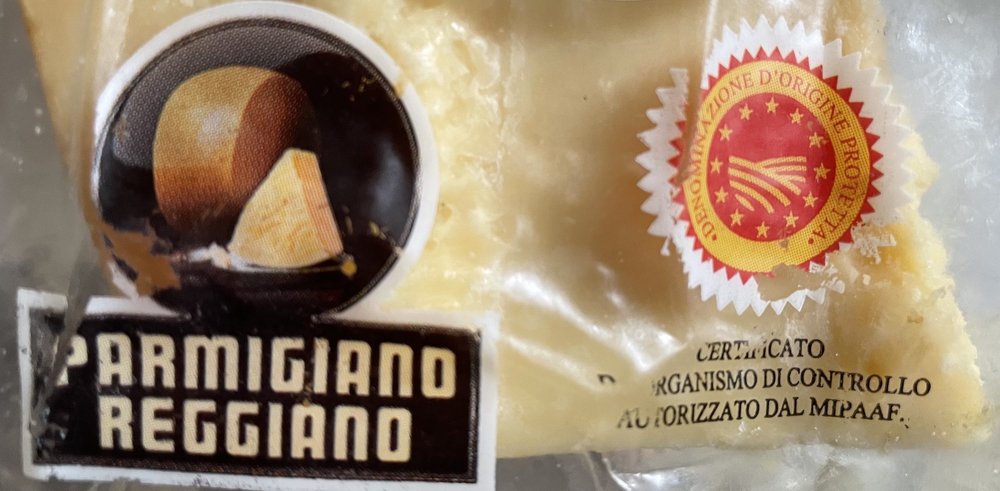
Consumers have lots of options when choosing what to eat and drink. Online shopping and modern shipping have made cheeses, wines, and other agricultural products from all over the world easily enjoyed by just about anyone. But names and labels on some products can be intentionally confusing. Fortunately geographic indication labels are intended to make identifying what you’re buying easier.
Costco-sized Parmesan! by shazam791
As an example, for many people, the cheeses Parmigiano-Reggiano and Parmesan are nearly interchangeable, often collectively referred to simply as “parm”. But one is considered the king of all cheeses dating back 900 years, and is made with only raw milk, salt, and rennet. The other can be a grated product that sometimes uses refined wood pulp and potassium sorbate to maintain shape and color. Similar names, vastly different experiences. Whether intentional or accidental, the branding and marketing of lesser versions of foods we love in ways that heavily remind consumers of the real thing can create confusion. A geographical indication label helps to distinguish the two products.
European Geographical Designations
To help preserve and protect the traditions of culturally important products, many European countries developed classification systems to establish intellectual property rights. These defined products directly related to the areas in which they are produced.
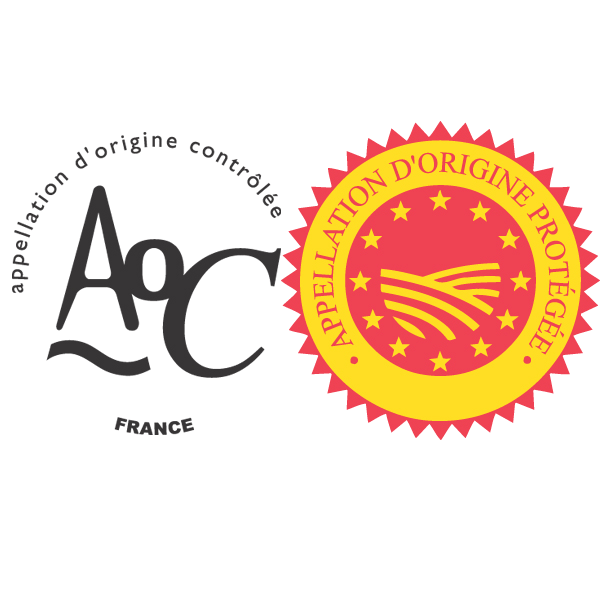
For example, France developed the appellation d’origine contrôlée (AOC) system in 1937.
Italy’s denominazione di origine controllata (DOC) started in 1963.
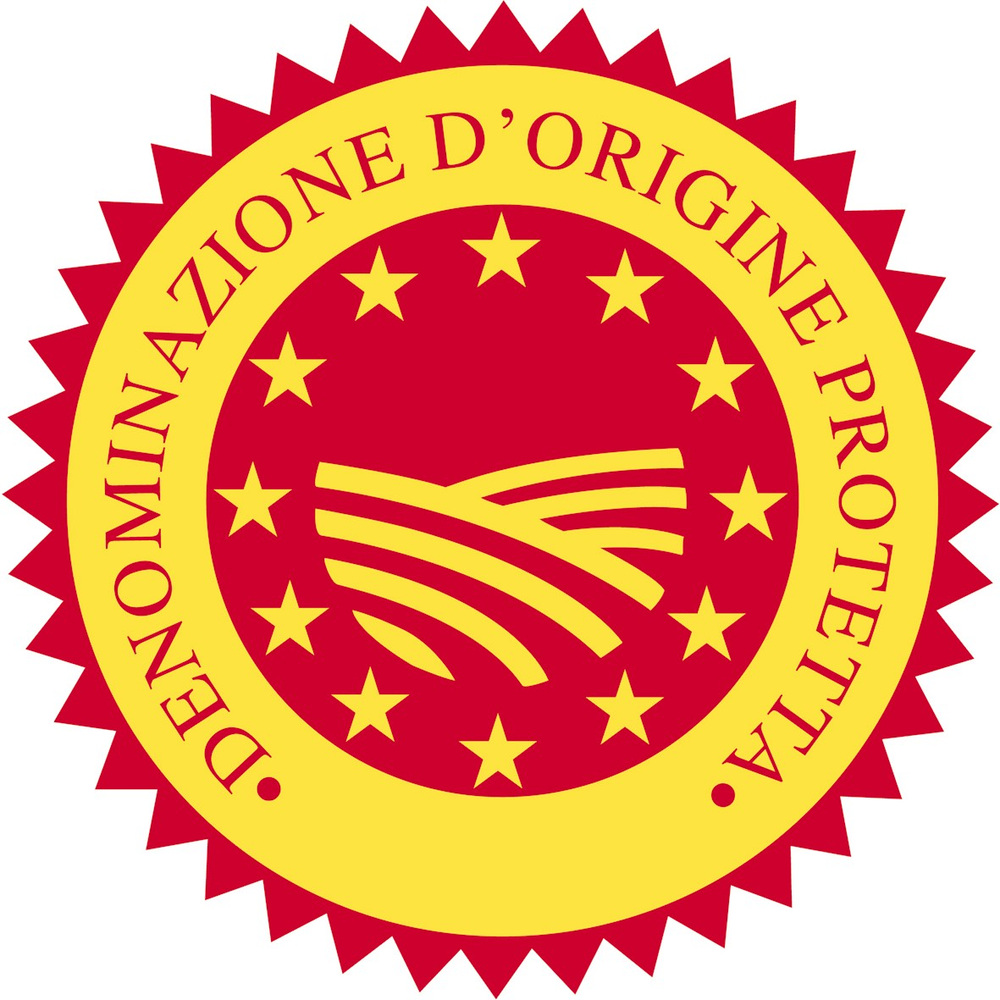
Ireland, Portugal, Spain and others have similar systems. These indicators were created to help give consumers confidence in the quality and authenticity of the products they are buying, as well as helping producers market their products more effectively.
In the early 1990’s, the European Union (EU) created a system of quality schemes that would unify all the existing classifications. It was not meant to replace each country’s existing guidelines. Instead, the goal was to standardize them across Europe, giving consumers a consistent labeling experience.
Countries that are not part of the EU don’t participate in this classification system. A notable example is Switzerland, who instead uses their own appellation d’origine protégée (AOP) and indication géographique protégée (IGP) indicators.
Knowing the main classifications used in the EU can you to identify genuine products.
PDO (Protected Designation of Origin)
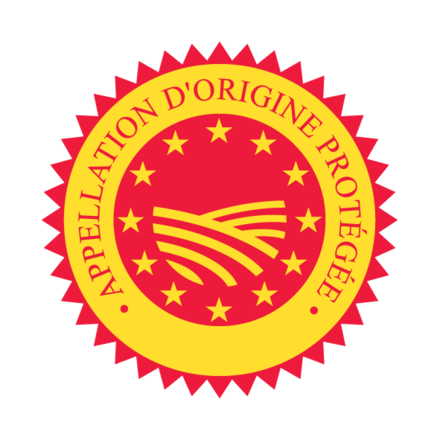
The most comprehensive designation given to products that most strongly reflect the place in which they are made. Created in 1992, the PDO designation is used for foods, agricultural products, and wines. To qualify for this designation, every aspect of creating the product must take place within the defined boundaries, including any preparation and processing. All the materials used must also come from the defined geographical area.
For example, Pecorino Siciliano’s PDO requirements include using raw sheep milk from animals within Sicily only, and dry-rubbing the wheels with salt prior to maturing. While young versions of Pecorino Siciliano can be enjoyed locally, PDO status is only given to those wheels aged a minimum of 120 days.
PDO foods and agricultural products qualifying for certification are required to display the yellow and red starburst “PDO” logo on their packaging. Wines that qualify have the option of displaying the logo or not, and must be made with 100% grapes grown in the defined area.
PGI (Protected Geographical Indication)
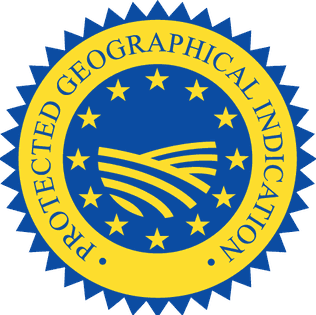
The PGI designation emphasizes the connection between a product’s name and the specific geographical area associated with it. Unlike the more stringent PDO designation that requires all phases of production take place within the area, PGI requires that only one phase takes place. This slightly more flexible requirement allows foods to be made in a broader area while still qualifying for the PGI designation.
For example, traditional Welsh Caerphilly was originally a moist-curd cheese made around the eponymous village in the 19th century. Local competition for milk a century later caused production to move to England where a harder, more industrialized version was favored. Starting in the late 1990’s, producers within the village of Caerphilly resumed making the cheese using the original techniques. Because the cheese is made in both places, Caerphilly cannot qualify for a PDO designation. As the recipe is still made in the original geographical area, a PGI designation is used instead.
Wines bearing the blue and yellow starburst PGI logo must be made with at least 85% grapes grown within the defined area.
GI (Geographical Indication)

The GI designation only applies to wines and spirits. The European Commission defines the purpose of this designation as protecting “the name of a spirit drink or aromatised wine originating in a country, region or locality where the product’s particular quality, reputation or other characteristic is essentially attributable to its geographical origin.”
To qualify for a GI designation, only one stage of the distillation or preparation needs to take place within the defined geographical area. The raw products used to make the alcoholic product do not need to come from the area. A familiar example of this is Irish whiskey, which has been brewed, distilled, and matured in Ireland since the 6th century. The Irish Whiskey GI does not require the raw grains used for production to come from within Ireland.
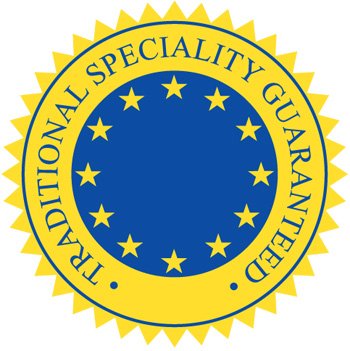
TSG, (traditional specialty guaranteed)
This designation highlights traditional aspects, such as the way the product is made or its composition, without being linked to a specific geographical area. The name of a product being registered as a TSG protects it against falsification and misuse.
